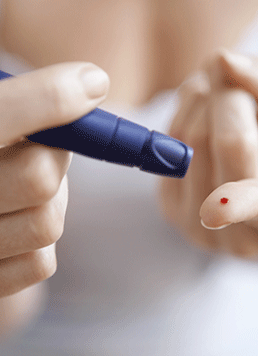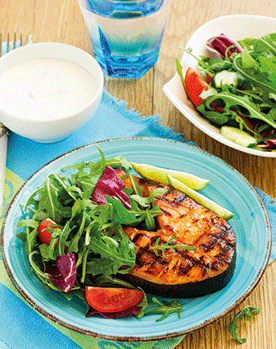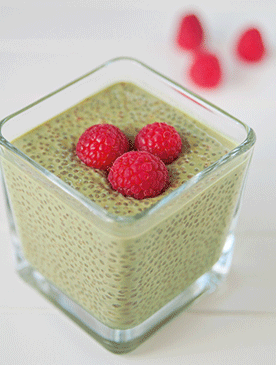Reduce your diabetes risk

We take a look at this common health condition and how to reduce your risk of developing it
Diabetes is a lifelong condition whereby the body cannot control its blood sugar levels due to problems with the hormone insulin. According to the charity Diabetes UK, there are 3.2 million people diagnosed with diabetes in the UK and an estimated 630,000 people who have the condition, but don’t know it. There are two main types of diabetes – type 1 and type 2. The former can develop quickly over weeks or even days, whereas many people can have the latter type for years without realising.
An overview of diabetes
Glucose comes from digesting carbohydrates and is utilised by the body for energy. Normally, the hormone insulin, which is produced by the pancreas, carefully regulates the amount of glucose that is in the blood. Insulin stimulates the body’s cells to absorb enough glucose from the blood to provide the energy that they need. After eating, the amount of glucose in the blood rises, and this triggers the release of insulin. When blood glucose levels fall, insulin levels fall too.
The main symptoms of diabetes include feeling very thirsty, urinating more frequently than usual, particularly at night, feeling very tired, weight loss and loss of muscle bulk, itching around the penis or vagina, or frequent episodes of thrush, cuts or wounds that heal slowly and blurred vision (caused by the lens of the eye becoming dry).
With individuals who have type 1 diabetes, the cells of the pancreas stop making insulin. As a result, the body’s glucose levels increase, which can lead to organ damage. Type 1 diabetes is often known as insulin-dependent diabetes and is also known as early-onset diabetes because it usually develops before the age of 40. Individuals with type 1 diabetes will need insulin injections for the rest of their life and, as with those who have type 2 diabetes, they will need to ensure that their blood glucose levels stay balanced.
In the case of type 2 diabetes, either the pancreatic cells do not make enough insulin, or the body’s cells do not react properly to it. This is known as insulin resistance. It is far more common than type 1 diabetes and around 90 per cent of all adults in the UK with diabetes have type 2 diabetes. Symptoms can be controlled through eating a healthy diet, exercising regularly, and monitoring the body’s blood glucose levels.
Reduce your risk
“Modern, western diets are high in sugary food and carbohydrates and so it is not surprising that type 2 diabetes is increasingly prevalent in the UK,” says Bent Henriksen OBE (Hon.), managing director at nutritional supplements expert Pharma Nord UK (www.pharmanord.co.uk). “Our research has shown a need for greater attention to be paid to the very real risk of developing type 2 diabetes. One in three of us is pre-diabetic with high blood sugar. Despite this, nine in 10 of those who took part in a Pharma Nord survey say they are not worried about their blood sugar. One third of British adults have ‘no idea’ what their blood sugar level is and less than one third visit their doctor for regular blood tests and check-ups.”
“By the time people start displaying the symptoms of diabetes it’s a sign that the body’s balance mechanisms are beginning to fail under the strain,” says holistic osteopath Marcus Webb (www.supersupps.com). “Type 2 diabetes is a rather slow-burn condition. Although a family history can be a strong indicator of a person’s predisposition it can still creep up with no real outward signs or symptoms other than an expanding waist-line in most cases.
“Managing early diet-related (type 2) diabetes can yield some rather impressive results but, as its name suggests, diet plays a key role. Getting to know what foods deliver high levels of glucose once digested is a vital learning curve that has to be conquered. Working with a nutritionist or naturopath with experience of modifying the dietary glycaemic load (the glucose rush that occurs after eating and between meals) can, on its own, make a great improvement to the body’s regulatory and over-stretched insulin mechanisms.”
Tips for balancing your blood sugar levels
Try this advice from Primrose Matheson, naturopath and founder of Primrose’s Kitchen (primroseskitchen.com)
- When trying to naturally balance your blood sugar levels, I would always recommend eating breakfast. When we skip breakfast the body increases its stress hormone production and this starts to break down our muscle for energy which creates havoc in our body. Make sure you have at least 20-40g of protein for breakfast each morning to maintain good blood sugar levels throughout the day.
- I also recommend adding cinnamon powder to meals and smoothies, wherever possible as it is fantastic for balancing blood sugar levels. The curcumin in turmeric equally has great effects on blood sugar balance.
- Remove all processed foods from your diet and replace with green, leafy vegetables; pulses and fruits such as pears, berries and apples which have a lower GI than other fruits.
- Stress plays a major role in blood sugar imbalances – it triggers insulin resistance, promotes weight gain around your middle, increases inflammation and, over prolonged periods of time, can lead to diabetes. Therefore it is important to take at least 10 minutes a day for some mindfulness and relaxation.
- Sleep is also very important when thinking about blood sugar. Sleep deprivation causes cortisol concentrations to stay higher in your body for longer, and higher evening cortisol levels are linked to insulin resistance.
Gestational diabetes
“Gestational diabetes is diabetes diagnosed during pregnancy,” explains Sophie Cairns, Diabetes Specialist Dietician for Betavivo. “It is mainly caused by placental hormones which counteract the effect of insulin. Insulin’s main job in our body is to transport sugar to our cells. When it’s not working efficiently some of the sugar stays in the blood which is detected by glucose tolerance tests. As the baby grows the level of hormones increases which is why it’s usually not detected until 28 weeks of gestation. Obesity is a risk for gestational diabetes. The reason for that is that a higher amount of body fat (particularly if situated around the vital organs) makes us resistant to insulin. Further risk factors include high maternal age, if you’ve had a previous large baby (4,500g or more), certain minority ethnic backgrounds and if you’ve had gestational diabetes in a previous pregnancy. Trying to lose weight before the pregnancy is recommended. A healthy weight loss is achieved by reducing your portion size at meal times, eating more vegetables, salad and fruit and avoiding high sugar and/or high fat foods like pastry, cakes, crisps and, sweets.
Exercise also helps to burn calories and body fat. Everyone is recommended to do 30 minutes per day, but when you want to lose weight it’s helpful to try and fit an hour in when you can. If you’re already pregnant, the recommendation is to limit weight gain. This can be difficult as appetite can be changed, and perhaps you only want to eat a certain type of foods. But it’s also a time you might feel extra motivated to eat healthy as everything you eat is passed on to the baby. Keeping up exercise as much as possible in pregnancy helps limit weight gain and balances blood glucose. It’s recommended 30 minutes per day of gentle exercise.”

RECIPE 1:
Pan fried soy salmon with mixed salad
Increasing your intake of fish oil can be helpful for people with insulin resistance and poor blood sugar balance. This is a wonderful, high-protein, low-carb recipe rich in omega-3 fats
Serves: 4
Ingredients
For the dressing:
- 5 tbsp tamari mixed with 2 tbsp xylitol
- 2 red chillies, deseeded and chopped
- 3 garlic cloves, crushed
- 2 tsp grated ginger
- Juice of 2 limes
- 1 tbsp rice vinegar
- 2 tsp olive oil
For the salmon:
- 4 salmon fillets or steaks
- 1 tbsp coconut oil
Mixed salad to serve
METHOD
1. Mix all the dressing ingredients together.
2. Pour a little of the dressing over the salmon and marinate for 30 minutes.
3. Heat the coconut oil in a frying pan and pan fry the salmon for three to five minutes on each side until cooked.
4. Serve with a mixed salad and the dressing drizzled over

RECIPE 2:
Matcha green tea chia pudding
High in antioxidants and omega-3 fats, this is a great anti-inflammatory recipe. The soluble fibre in the seeds helps stabilise blood sugar balance, while adding a scoop of protein powder also helps to stabilise blood sugar and provides a more filling breakfast or snack. Cinnamon has been shown to help people with pre-diabetes to control their blood sugar levels. It improves insulin sensitivity, thus balancing blood sugar. Dosages of between 1g and 6g have been used in studies. Matcha green tea is rich in epigallocatechin gallate, a flavonoid that helps mimic insulin’s effects in slowing the release of newly made glucose into the bloodstream.
Serves: 4
Ingredients
- 500ml/1 pint almond milk or coconut milk
- 1-2 tbsp xylitol to taste
- 60g vanilla protein powder
- 1 tbsp vanilla extract
- Pinch of cinnamon
- 1 tsp matcha green tea powder
- 6 tbsp chia seeds
- Pinch of sea salt
- Handful of mixed berries to serve
METHOD
1. Blend the milk, xylitol, vanilla, cinnamon and matcha together in a blender till smooth.
2. Pour the liquid over the chia seeds. Stir thoroughly. Stir again every few minutes for the next 15 minutes. You can allow the mixture to sit for one hour before serving or leave overnight.
Recipes courtesy of Christine Bailey, an award-winning nutritionist, chef and author with over 18 years of experience. For more information visit www.christinebailey.co.uk
Try this!
“Chromium is an important nutrient that works together with insulin to regulate blood sugar levels,” says Bent Henriksen. “Modern convenience foods contain very little chromium and UK dietary intake is well below recommended levels. Processing and cooking methods also deplete chromium from food, creating a need for supplements.”
Did you know?
Xylitol, a natural sugar substitute, does not raise blood glucose or insulin levels, meaning that it can help to balance blood sugar levels. This naturally-occurring carbohydrate can be extracted from any woody, fibrous plant material. It contains one third-fewer calories than normal sugar and is also known to prevent the development of tooth decay.
Read our guide to Vitamins and Minerals here...
Read previous Your Health articles here...